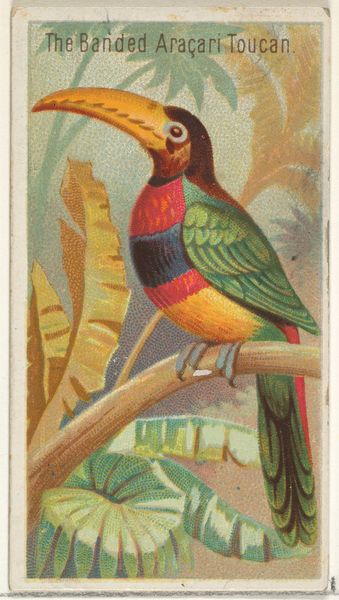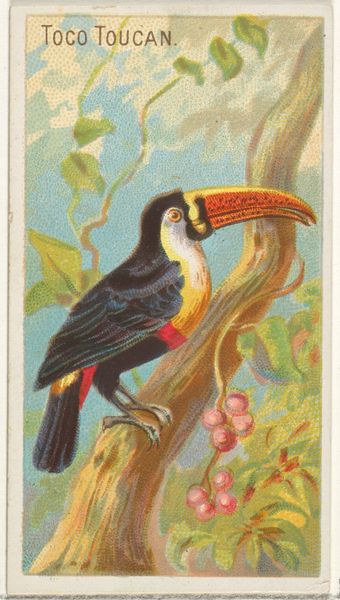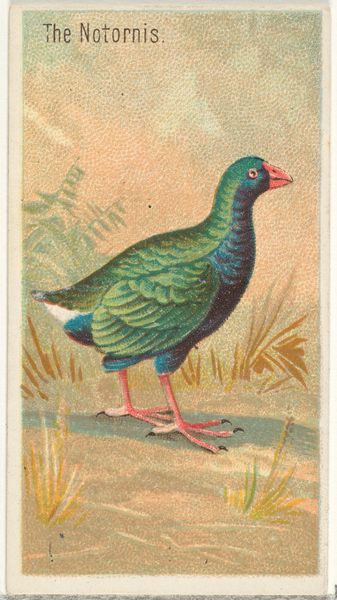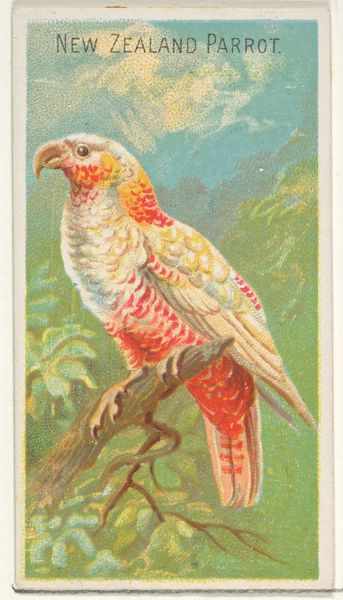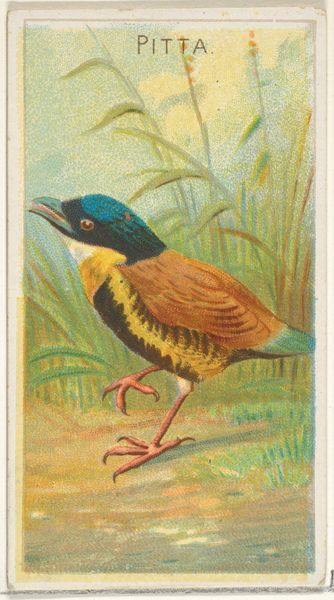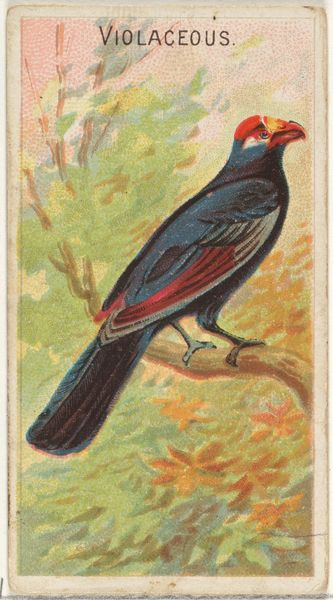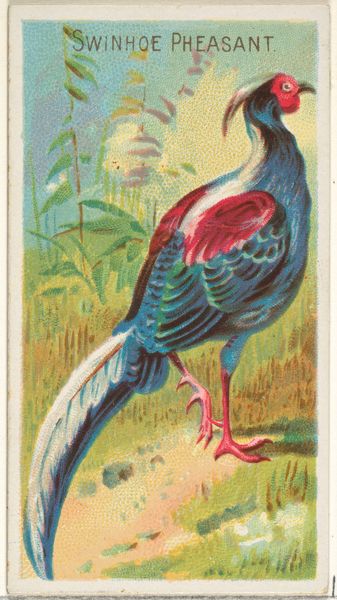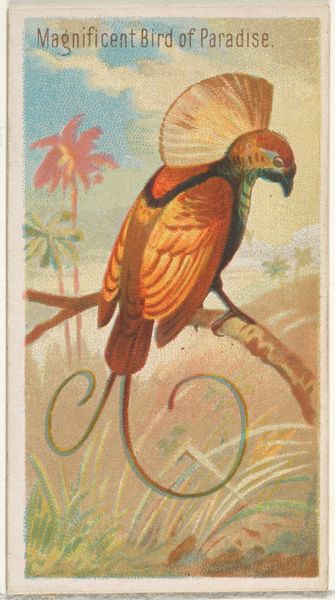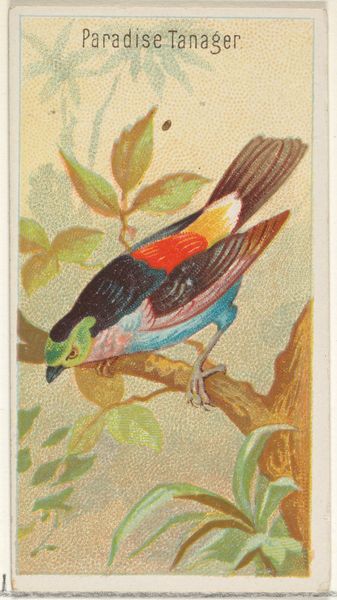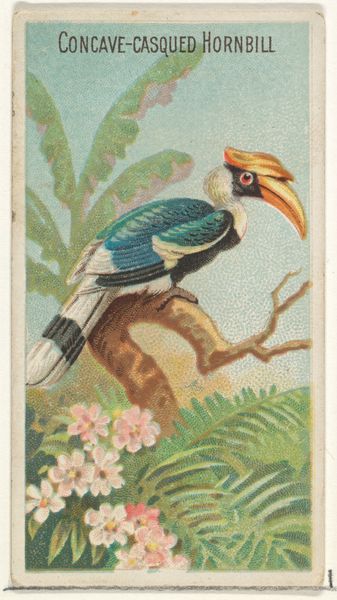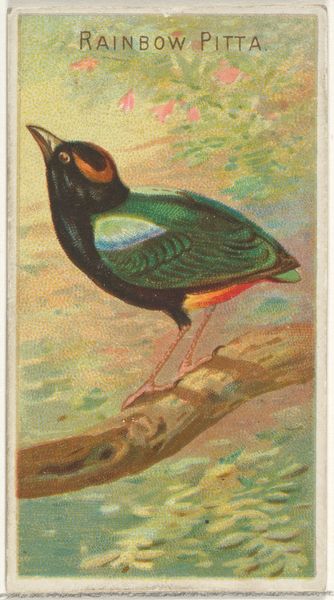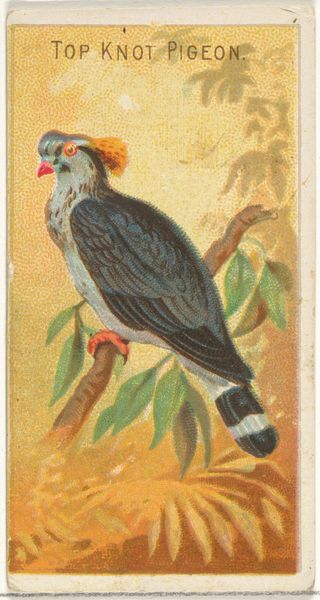
The Impeyan Pheasant, from the Birds of the Tropics series (N5) for Allen & Ginter Cigarettes Brands 1889
0:00
0:00
# print
#
watercolour illustration
#
watercolor
Dimensions: Sheet: 2 3/4 x 1 1/2 in. (7 x 3.8 cm)
Copyright: Public Domain
Curator: Ah, I'm drawn to this small but vibrant print—"The Impeyan Pheasant, from the Birds of the Tropics series" by Allen & Ginter, dating back to 1889. The vivid colors pop against the aged paper; it's quite remarkable, isn't it? Editor: It’s charming, but the first thing that strikes me is how exotic the pheasant seems within the context of an American cigarette card. It’s an example of imperial desire made manifest, miniature and readily consumed. Curator: Absolutely. These cards functioned as little windows onto the world, showcasing exotic birds and foreign landscapes. The Impeyan pheasant itself is quite stunning—each feather rendered with such delicate detail in watercolor. One can almost see the influence of Japonisme in the elegant composition. Editor: Definitely, we have to read this Japonisme carefully. It wasn't simply aesthetic appropriation but also the industrialisation of distribution: these tiny pictures found their way into the hands of countless smokers, normalising colonial fantasies and access to far-flung lands. This bird, literally displaced and turned into a consumer object. Curator: That’s a vital point to consider, yes. Allen & Ginter were certainly tapping into a market eager for exoticism, adventure. And yet, perhaps these cards also sparked curiosity and even an early form of environmental awareness among some? Birds of the Tropics, it subtly implies the preciousness of a place and the many avian beauties found there. Editor: It's an uneasy mix, though. Environmentalism linked inextricably with commercial exploitation. Think of the symbolic weight this particular bird carries – a vibrant life condensed into something collectible, affordable because its living counterpart is somewhere very far away, likely being hunted by wealthy colonial sportsmen. Curator: The symbolic power of these images remains potent. Even now, seeing the shimmering plumage and the carefully observed posture evokes both wonder and contemplation. Editor: Precisely. This image isn't just about beauty; it's a complex artifact reflecting intertwined systems of trade, display, and unequal global relations. Curator: Looking closely again, at the delicate rendering, its miniature perfection – these visual contradictions speak volumes about the late 19th century. It's more than a simple cigarette card; it's a document, a testament, and an unresolved paradox. Editor: It reminds me how art is always embedded in complicated power structures. Even what seems to be an innocuous depiction of natural beauty asks critical questions of where we stand now.
Comments
No comments
Be the first to comment and join the conversation on the ultimate creative platform.
